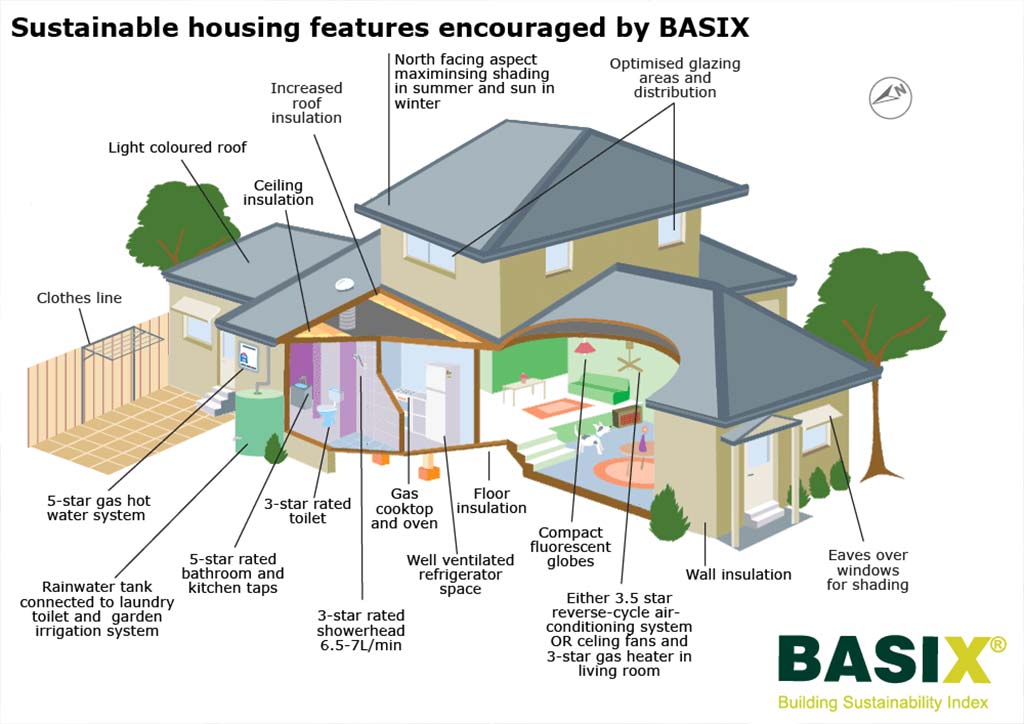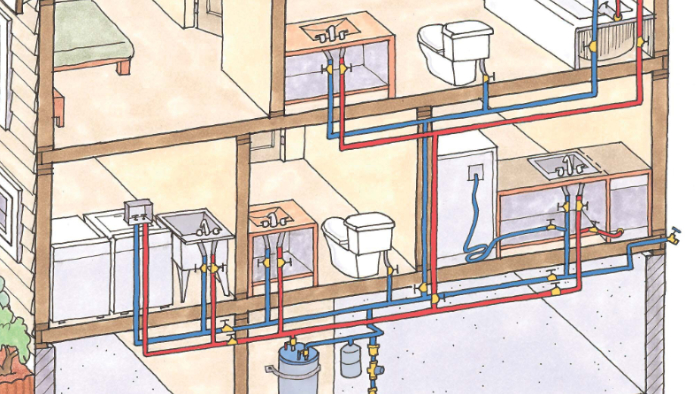How to Understand Your Property's Plumbing System Anatomy
How to Understand Your Property's Plumbing System Anatomy
Blog Article
Any individual seems to have his or her own idea about The Inner Workings of Your Home's Plumbing.

Recognizing exactly how your home's pipes system works is essential for every single property owner. From providing clean water for alcohol consumption, cooking, and showering to safely eliminating wastewater, a well-maintained pipes system is essential for your household's wellness and convenience. In this extensive overview, we'll check out the detailed network that makes up your home's pipes and offer ideas on upkeep, upgrades, and dealing with usual issues.
Intro
Your home's plumbing system is more than simply a network of pipes; it's a complicated system that ensures you have accessibility to clean water and effective wastewater elimination. Knowing its elements and just how they collaborate can help you avoid pricey repairs and make sure every little thing runs smoothly.
Fundamental Parts of a Pipes System
Pipes and Tubes
At the heart of your plumbing system are the pipes and tubes that lug water throughout your home. These can be made of different products such as copper, PVC, or PEX, each with its advantages in terms of sturdiness and cost-effectiveness.
Components: Sinks, Toilets, Showers, and so on.
Components like sinks, toilets, showers, and tubs are where water is made use of in your house. Recognizing exactly how these components attach to the plumbing system assists in detecting issues and intending upgrades.
Valves and Shut-off Factors
Valves regulate the flow of water in your pipes system. Shut-off shutoffs are essential throughout emergency situations or when you need to make repairs, enabling you to separate parts of the system without disrupting water flow to the entire residence.
Supply Of Water System
Key Water Line
The main water line attaches your home to the local water supply or a personal well. It's where water enters your home and is dispersed to various fixtures.
Water Meter and Stress Regulator
The water meter measures your water use, while a pressure regulator makes sure that water moves at a safe pressure throughout your home's pipes system, protecting against damages to pipes and fixtures.
Cold Water vs. Warm water Lines
Recognizing the distinction between cold water lines, which supply water directly from the primary, and hot water lines, which bring warmed water from the hot water heater, aids in troubleshooting and planning for upgrades.
Drain System
Drain Water Lines and Traps
Drain pipelines bring wastewater away from sinks, showers, and toilets to the sewage system or septic system. Catches stop drain gases from entering your home and additionally catch particles that might cause clogs.
Ventilation Pipelines
Air flow pipelines permit air right into the drain system, avoiding suction that could slow down drain and create catches to empty. Correct ventilation is vital for maintaining the integrity of your pipes system.
Significance of Proper Water Drainage
Making sure proper water drainage stops backups and water damage. Regularly cleansing drains pipes and maintaining catches can avoid costly fixings and extend the life of your pipes system.
Water Heater
Types of Hot Water Heater
Hot water heater can be tankless or typical tank-style. Tankless heating units heat water as needed, while tanks save warmed water for immediate usage.
Upgrading Your Plumbing System
Factors for Upgrading
Upgrading to water-efficient components or replacing old pipelines can enhance water top quality, minimize water bills, and raise the value of your home.
Modern Pipes Technologies and Their Benefits
Check out technologies like clever leak detectors, water-saving commodes, and energy-efficient hot water heater that can save cash and reduce ecological impact.
Price Considerations and ROI
Compute the upfront prices versus long-term cost savings when taking into consideration plumbing upgrades. Several upgrades pay for themselves via decreased utility costs and fewer repair services.
How Water Heaters Connect to the Plumbing System
Understanding exactly how water heaters link to both the cold water supply and warm water distribution lines aids in diagnosing problems like insufficient warm water or leakages.
Upkeep Tips for Water Heaters
Routinely flushing your water heater to eliminate debris, examining the temperature level setups, and evaluating for leakages can expand its lifespan and improve energy effectiveness.
Typical Pipes Concerns
Leakages and Their Reasons
Leaks can occur due to aging pipes, loose fittings, or high water pressure. Resolving leakages quickly prevents water damages and mold growth.
Clogs and Clogs
Blockages in drains and commodes are typically caused by purging non-flushable items or a build-up of grease and hair. Making use of drainpipe displays and being mindful of what decreases your drains pipes can avoid obstructions.
Indications of Pipes Problems to Expect
Low tide pressure, slow-moving drains pipes, foul odors, or uncommonly high water bills are indications of potential pipes troubles that should be dealt with quickly.
Pipes Upkeep Tips
Regular Evaluations and Checks
Arrange yearly pipes inspections to capture problems early. Seek signs of leakages, corrosion, or mineral accumulation in taps and showerheads.
DIY Upkeep Tasks
Easy jobs like cleansing tap aerators, checking for bathroom leaks utilizing color tablets, or protecting revealed pipelines in cold environments can protect against major pipes concerns.
When to Call a Professional Plumbing Professional
Know when a plumbing problem calls for professional know-how. Trying complex repair services without correct knowledge can result in even more damages and greater repair expenses.
Tips for Minimizing Water Use
Simple practices like dealing with leaks quickly, taking shorter showers, and running complete lots of washing and dishes can conserve water and lower your energy costs.
Eco-Friendly Plumbing Options
Consider sustainable pipes materials like bamboo for flooring, which is durable and environmentally friendly, or recycled glass for counter tops.
Emergency situation Readiness
Actions to Take Throughout a Pipes Emergency situation
Know where your shut-off valves are located and how to shut off the water system in case of a burst pipe or major leak.
Value of Having Emergency Get In Touches With Helpful
Maintain get in touch with info for neighborhood plumbers or emergency situation solutions conveniently offered for fast feedback throughout a pipes dilemma.
Environmental Effect and Preservation
Water-Saving Components and Devices
Installing low-flow taps, showerheads, and commodes can dramatically decrease water use without giving up efficiency.
Do It Yourself Emergency Situation Fixes (When Applicable).
Temporary solutions like making use of duct tape to patch a leaking pipe or placing a pail under a dripping faucet can lessen damages till a specialist plumber gets here.
Verdict.
Recognizing the composition of your home's pipes system encourages you to preserve it successfully, saving money and time on fixings. By adhering to normal maintenance regimens and remaining educated concerning modern-day pipes technologies, you can ensure your plumbing system operates effectively for many years ahead.
HOW YOUR PLUMBING SYSTEM WORKS
Which Pipes Do What?
Blue lines = fresh water supply entering the building Red lines = hot water supply entering the building Grey lines = pipes carrying waste away from the building and venting pipes carrying gases away from the building (through the roof) YOUR MAIN PLUMBING SYSTEMS
There are two main plumbing systems that support your home s basic plumbing needs one that brings clean water into your home, and one that sends dirty water away from your home. Connected to the toilet, bath, shower, and other faucets in your home, these two systems keep your water flowing in the right directions.
ACCESSING FRESH WATER
Fresh and clean water is brought into your home through the main water supply line . Filtered through one pipe, this water is pressured to flow into the various fixtures in your home at any given time.
This water can be sourced from a well located on your property, a pond or river (mostly cottages), or, as in most cases, from the city s municipal water treatment centre. However, it is important to note that water that is untreated, such as the water siphoned from ponds or rivers, may not be safe to drink. Personal water supplies always need to be treated for hardness and contaminants before consumed.
MUNICIPAL WATER SUPPLIES
Improve taste and odour Remove sediment Eliminate hardness Reduce chlorine COLD WATER SUPPLY VS. HOT WATER SUPPLY
Cold water flows into your home or building through the service line, which then distributes hot or cold water to your fixtures. This line is most commonly run through a central column that runs floor to floor. Hot water runs in short and straight pipes as the longer the pipeline, the more heat that will be lost in the transfer. Having shorter pipes also allows residents to access hot water more quickly.
WASTE WATER SYSTEM
Your wastewater system is divided into two parts pipes that send wastewater away from your home and venting pipes that send sewer gas away from your home. Sewage water travels through pipes that flush the water and waste towards local sewers that are operated and managed by your city or town. Most sewer systems rely on gravity to move the wastewater to where it needs to go.
The further away from your toilet or sink, the larger wastewater pipes become. This allows for waste to be disposed of from various parts of your home or business at once without pipe blockages. The angle and flow of these pipes are also essential for keeping your waste pipes clear of build up.
https://harrisplumbing.ca/how-your-home-plumbing-system-works/

Do you like reading up on Exploring Your Homes Plumbing Anatomy? Try to leave feedback directly below. We would be delighted to find out your feelings about this blog posting. We hope to see you back again later on. Don't hesitate to take the opportunity to distribute this article if you liked it. Thank you for being here. Please come visit our blog back soon.
Schedule Service Now Report this page